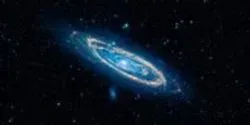extraterrestrial life

For centuries, humans have sought to learn whether life exists beyond Earth. That answer is closer than ever to fulfillment, and an Arizona State University team is working on a key part of that quest with NASA’s backing.

Astronomers using data from three of NASA's space telescopes — Hubble, Spitzer, and Kepler — have discovered clear skies and steamy water vapor on a gaseous planet outside our solar system. The planet is about the size of Neptune, making it the smallest for which molecules of any kind have been detected.

Astronomers searching the atmospheres of alien worlds for gases that might be produced by life can't rely on the detection of just one type, such as oxygen, ozone, or methane, because in some cases these gases can be produced non-biologically, according to extensive simulations by researchers in the NASA Astrobiology Institute’s Virtual Planetary Laboratory.















